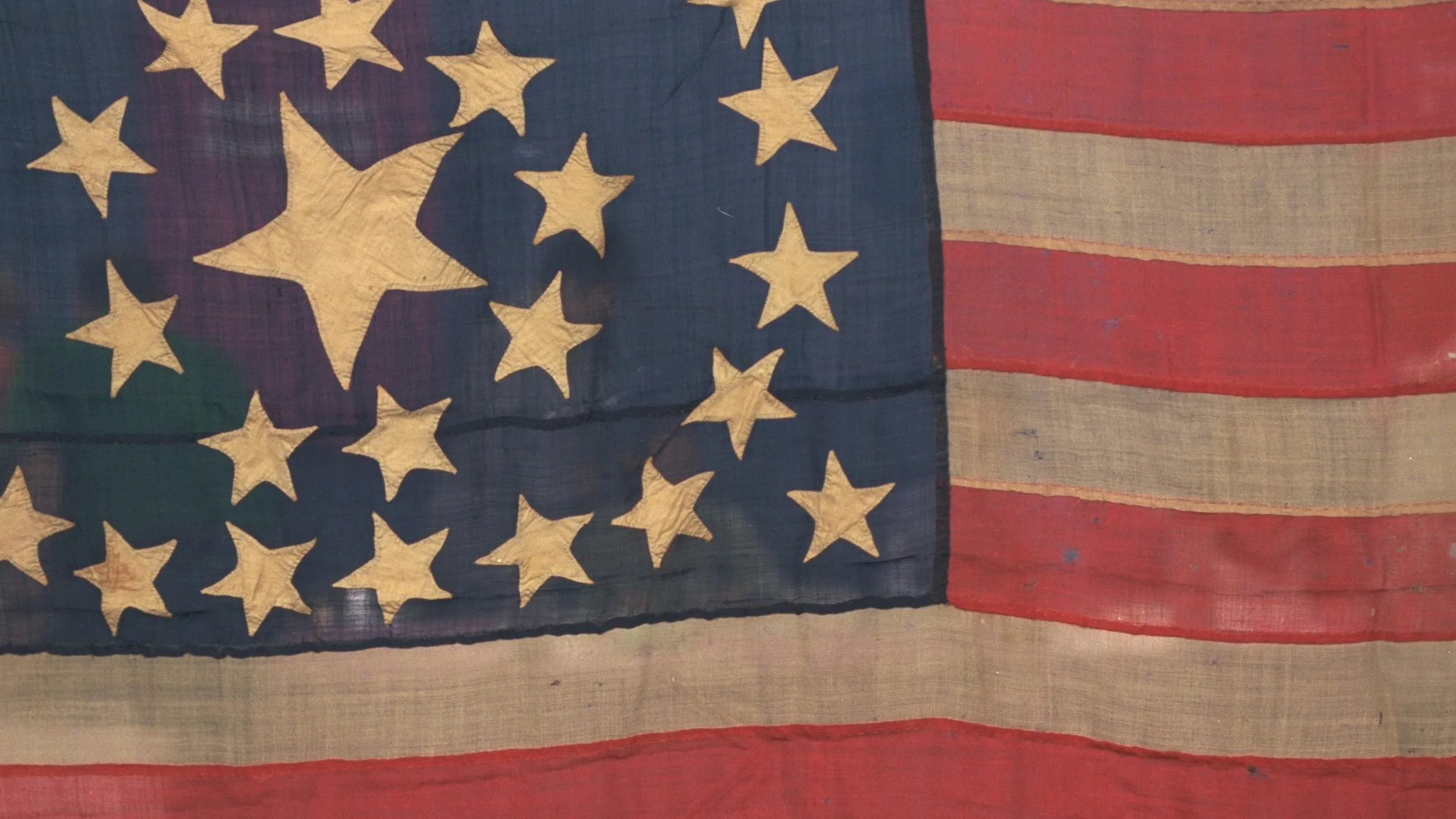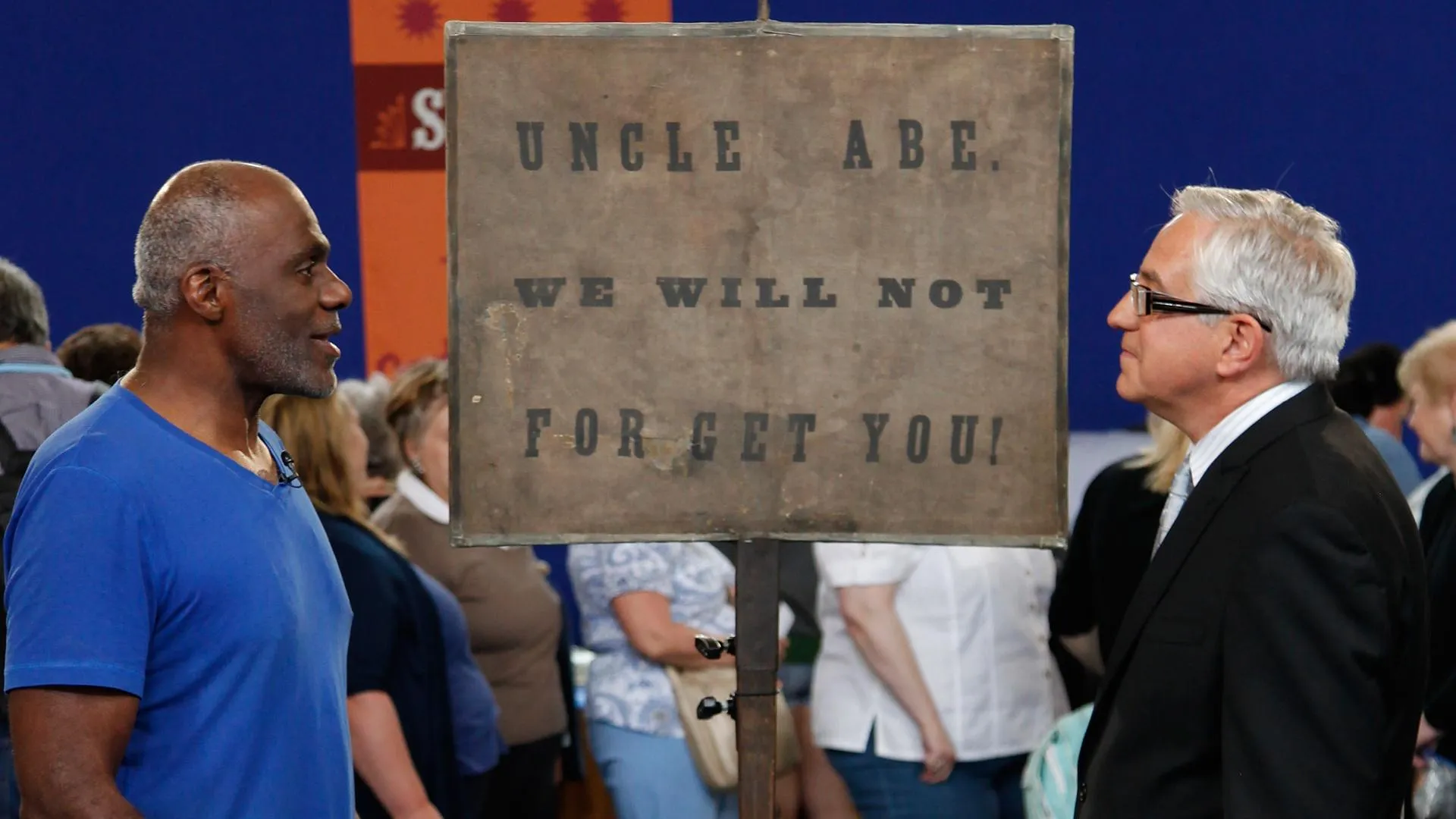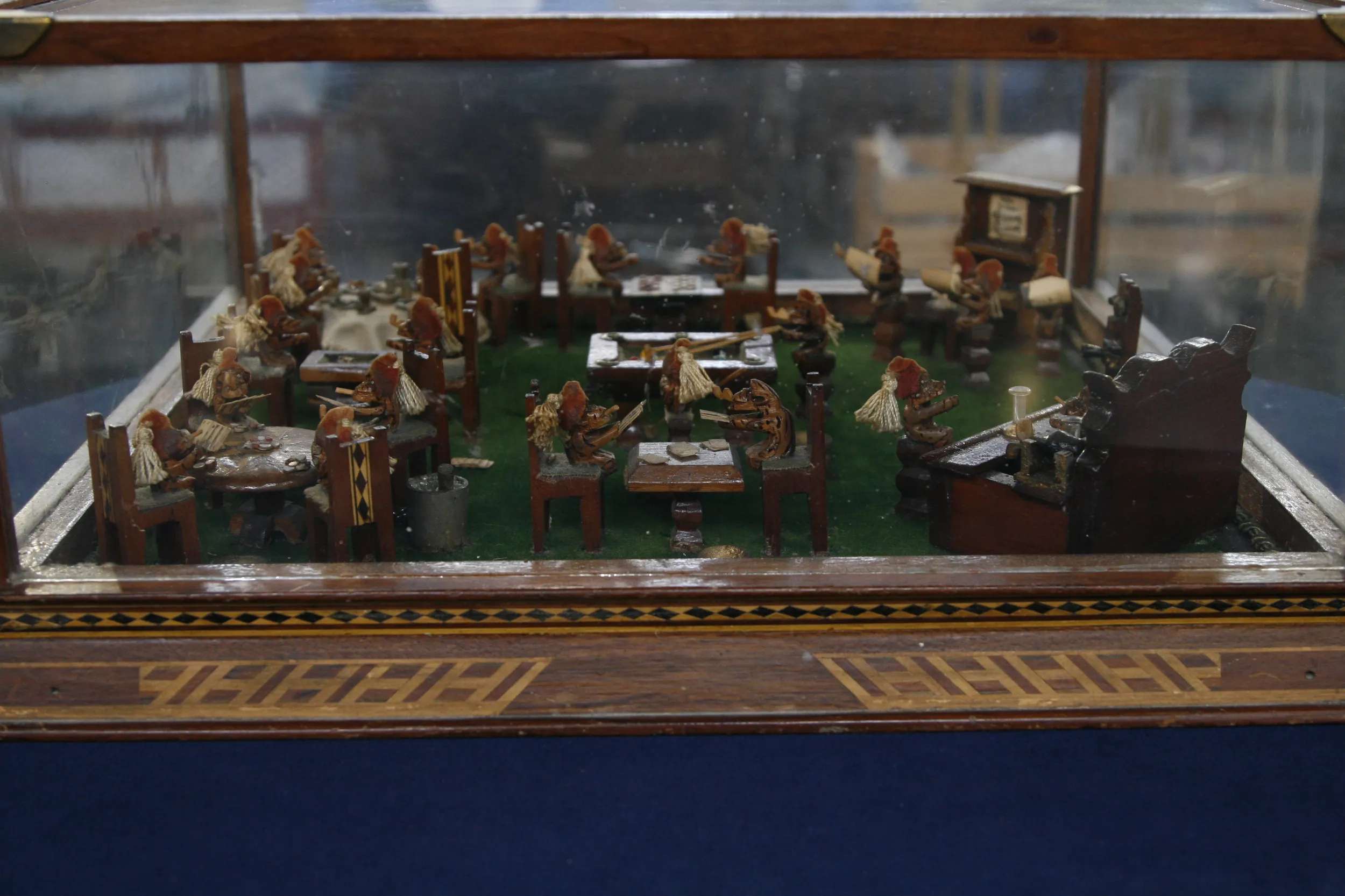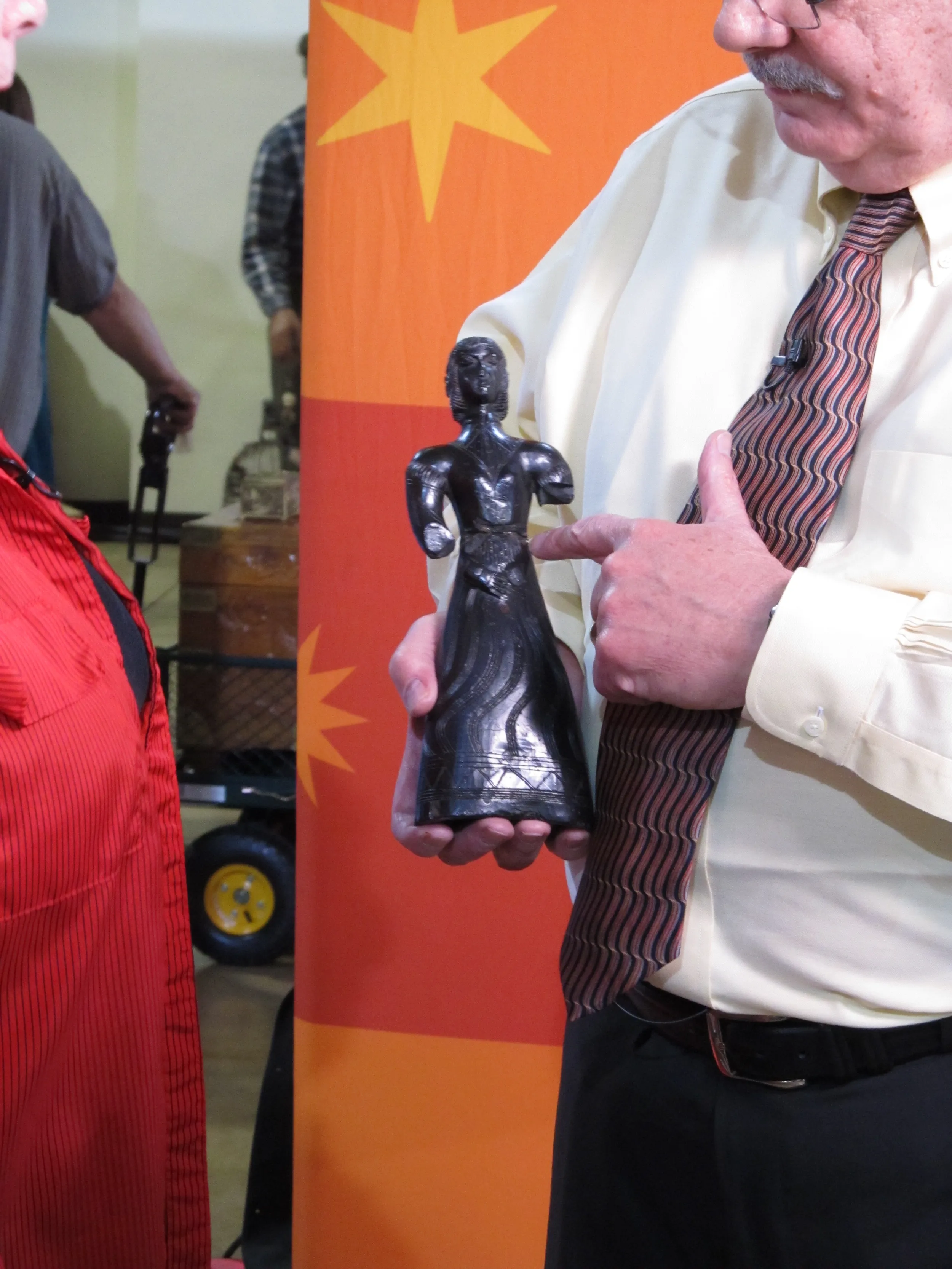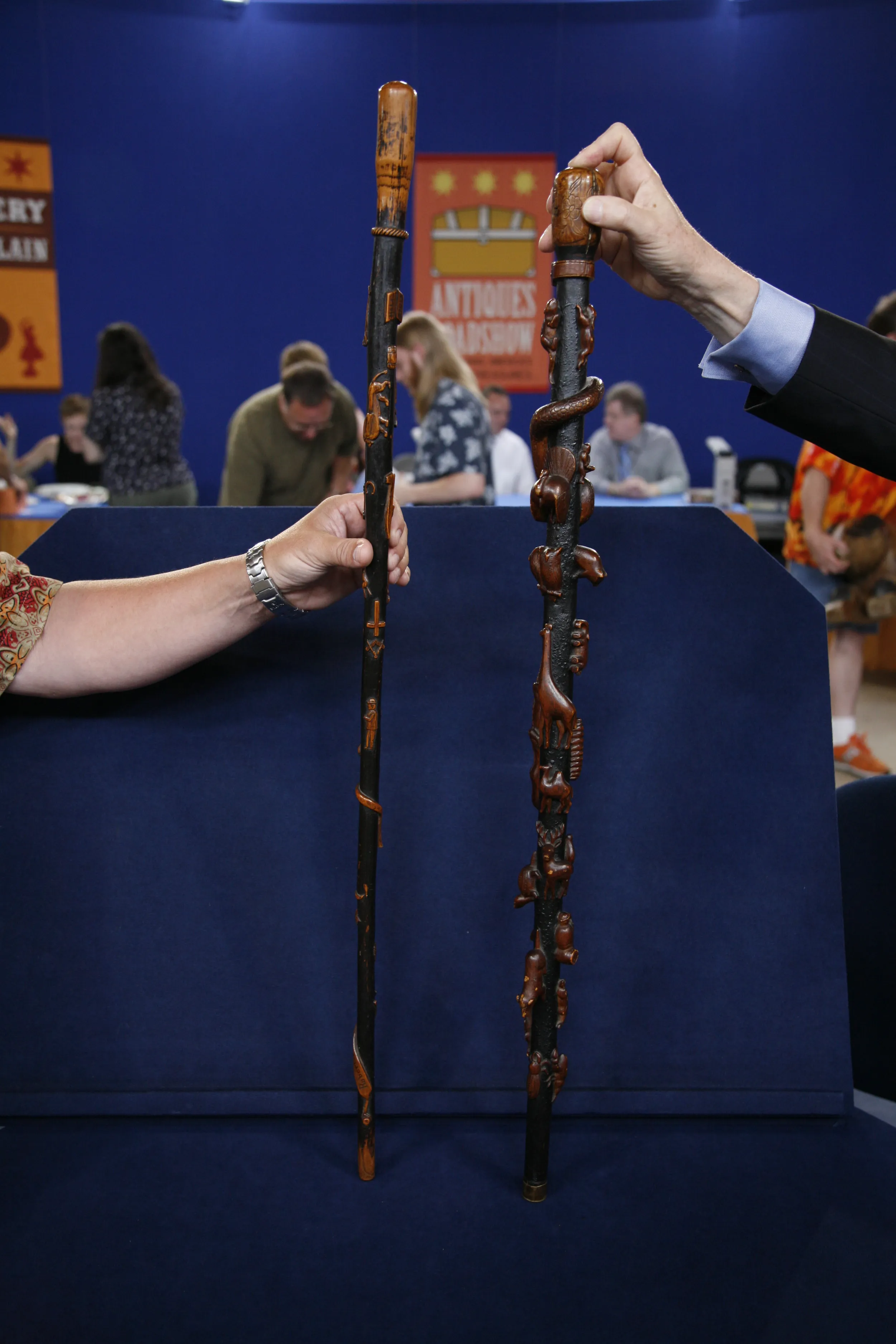APPRAISER: What do you call this?
GUEST: A whirligig. My understanding is, from my mother, that my great-grandfather carved it.
APPRAISER: And where did he live?
GUEST: He must have been in Wisconsin for a while, because he went in the Civil War at age 15 with the Wisconsin Volunteers. So I assume it's somewhere near Stillwater.
APPRAISER: That would date this whirligig somewhere around the Civil War period. So his involvement with the war may have influenced what he was carving. Did this whirligig, to your knowledge, ever get used much on the property?
GUEST: It was in my folks' attic for at least 50 years. And I've had it in storage for 25, 30 years.
APPRAISER: There's ample evidence here that it didn't see as much exposure to the elements as a lot of whirligigs.
GUEST: Could be.
APPRAISER: So as a result, it's very well preserved. And this is kind of an iconic, classic form for an American whirligig, in the form of a soldier. And this piece in its simplicity I think has great style and elegance. There's been some detail here to the tiniest degree carved. He's used... looks like little brads as buttons on his coat. You can see here on the front. And the thing that I find interesting about it, and perhaps unique, at least in my experience, in this case, is that he chose to carve the man's hands wrapped around the pole that precedes the paddle.
GUEST: Yeah.
APPRAISER: He has impressed each paddle with this stamped leaf design. That again is something I've never seen before. And it does show some evidence of use, particularly on areas of the head. But all in all, I would characterize it as being in remarkably good shape. These occasionally come onto the market in varying degrees of condition. But this is a special one, in my opinion.
GUEST: Good.
APPRAISER: I think in an auction situation, I would estimate its value between $10,000 and $15,000.
GUEST: Really?
APPRAISER: That's right.
GUEST: Hey, that's good.
APPRAISER: Yeah. It's a nifty thing.
GUEST: Very good. Thank you very much.

